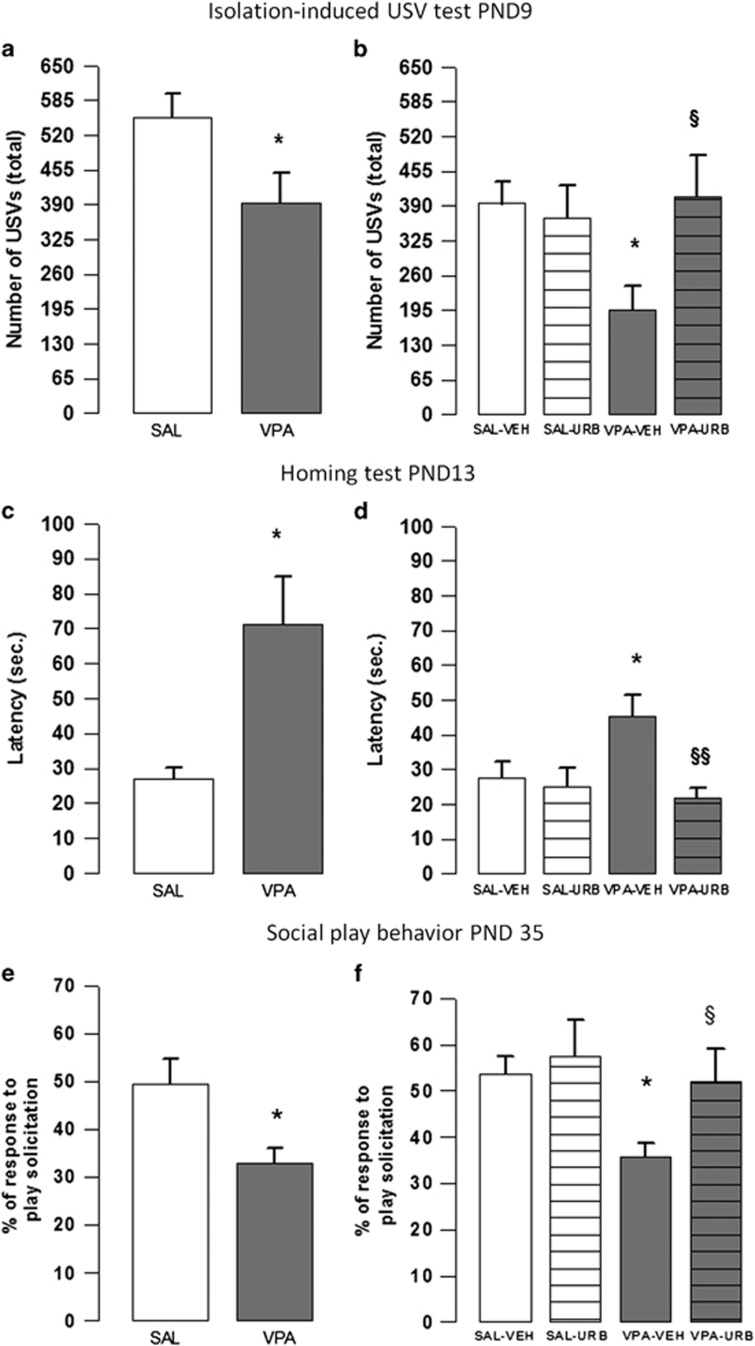Figure 3.
Isolation-induced USV, homing and social play behavior tests. Prenatal VPA exposure reduced isolation-induced USV emission at PND 9 (a; n (SAL)=13, n (VPA)=17), altered homing behavior at PND 13 (c; n (SAL)=10, n (VPA)=15) and reduced social play behavior at PND 35 (e; n (SAL)=14, n (VPA)=12). URB597 reversed the altered behavioral phenotype displayed by VPA-exposed rats in the isolation-induced USV (b; n (SAL-VEH)=12, n (VPA-VEH)=11, n (SAL-URB)=10, n (VPA-URB)=9), homing (d; n (SAL-VEH)=11, n (VPA-VEH)=11, n (SAL-URB)=14, n (VPA-URB)=8) and social play behavior (f; n (SAL-VEH)=9, n (VPA-VEH)=11, n (SAL-URB)=8, n (VPA-URB)=8) tests. Data represent mean±s.e.m. *P<0.05 vs SAL-VEH group; §P<0.05, §§P<0.01 vs VPA-VEH group (Student's t-test (a, c, e); Student's–Newman–Keuls post hoc test (b, d, f)). PND, postnatal day; SAL, saline; USV, ultrasonic visualization; VEH, vehicle; VPA, valproic acid.

